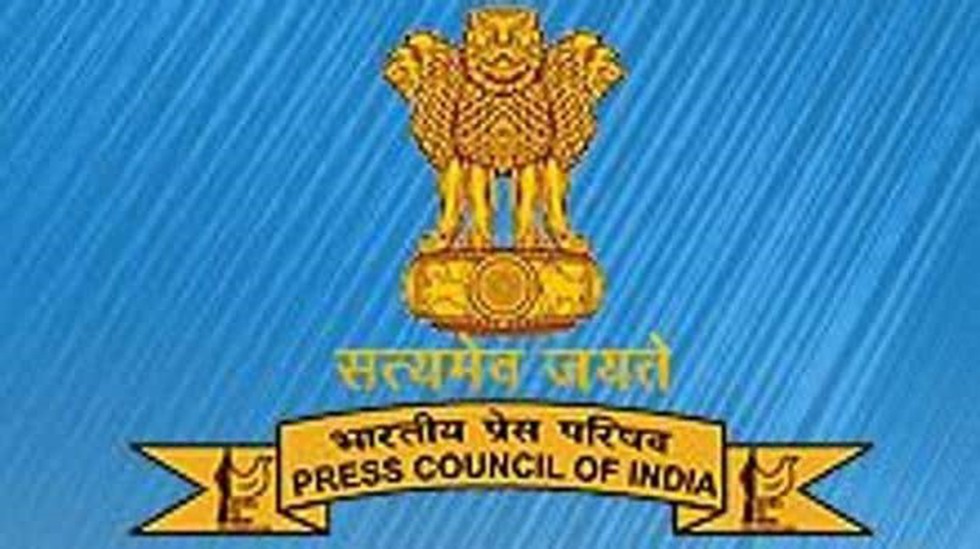
About the Press Council of India (PCI):
- The PCI was first set up in 1966 by the parliament on the recommendations of the First Press Commission under the chairmanship of Justice J.R Mudholkar.
- The present council functions under the Press Council Act 1978.
- It is a statutory, quasi-judicial body that acts as a watchdog of the press in India.
- Composition:
- It consists of a Chairman and 28 other members.
- The Chairman is nominated by a committee consisting of Chairman of Rajya Sabha, the Speaker of Lok Sabha, and one representative of the council
- The Chairman, by convention, has been a retired judge of the Supreme Court.
- The term of the Chairman and the members of the Council is 3 years.
Primary Function: To check the media practice and to keep an eye on the freedom of the press.
Other Functions:
-
- Helping newspapers to maintain their independence;
- Building up a code of conduct for journalists and newspapers according to high professional standards;
- Reviewing any development which is likely to restrict the supply and dissemination of news of public interest and importance;
- Reviewing such cases where assistance has been received by any newspaper or news agency in India from foreign sources, as referred to it by the Central Government;
- Providing facilities for the proper education and training of persons in the profession of journalism;
- Studying developments that may lead towards monopoly or concentration of ownership of newspapers and suggest remedies;
- Powers:
- It adjudicates the complaints either against the Press for violation of journalistic ethics or by the Press for interference with its freedom.
- The council shall have the same powers throughout India as are vested in a Civil court while trying a suit under the Code of Civil Procedure, 1908.
- Every inquiry held by the council shall be deemed to be a judicial proceeding under sections 193 and 228 of the Indian Penal Code.
- The decision of the council is final and can not be challenged in any court of law.

Why in News?
- The Reserve Bank of India (RBI) recently proposed to move the banking system to an expected credit loss-based provisioning approach from an “incurred loss” approach.
What is a loan-loss provision?
- The RBI defines a loan loss provision as an expense that banks set aside for defaulted loans.
- Banks set aside a portion of the expected loan repayments from all loans in their portfolio to cover the losses either completely or partially.
- In the event of a loss, instead of taking a loss in its cash flows, the bank can use its loan loss reserves to cover the loss.
- The level of loan loss provision is determined based on the level expected to protect the safety and soundness of the bank.
What is the Expected Credit Loss (ECL) regime?
- Under this practice, a bank is required to estimate expected credit losses based on forward-looking estimations rather than wait for credit losses to be actually incurred before making corresponding loss provisions.
- As per the proposed framework, banks will need to classify financial assets (primarily loans) as Stage 1, 2, or 3, depending on their credit risk profile, with Stage 2 and 3 loans having higher provisions based on the historical credit loss patterns observed by banks.
- This will be in contrast to the existing approach of incurred loss provisioning, whereby step-up provisions are made based on the time the account has remained in the Non-Performing Asser (NPA) category.
- Benefits of the ECL regime:
- It will result in excess provisions as compared to a shortfall in provisions, as seen in the incurred loss approach.
- It will further enhance the resilience of the banking system in line with globally accepted norms.
What is the problem with the incurred loss-based approach?
- It requires banks to provide for losses that have already occurred or been incurred.
- The delay in recognizing loan losses resulted in banks having to make higher levels of provisions which affected the bank's capital. This affected banks’ resilience and posed systemic risks.
- The delays in recognizing loan losses overstated the income generated by the banks, which, coupled with dividend payouts, impacted their capital base.
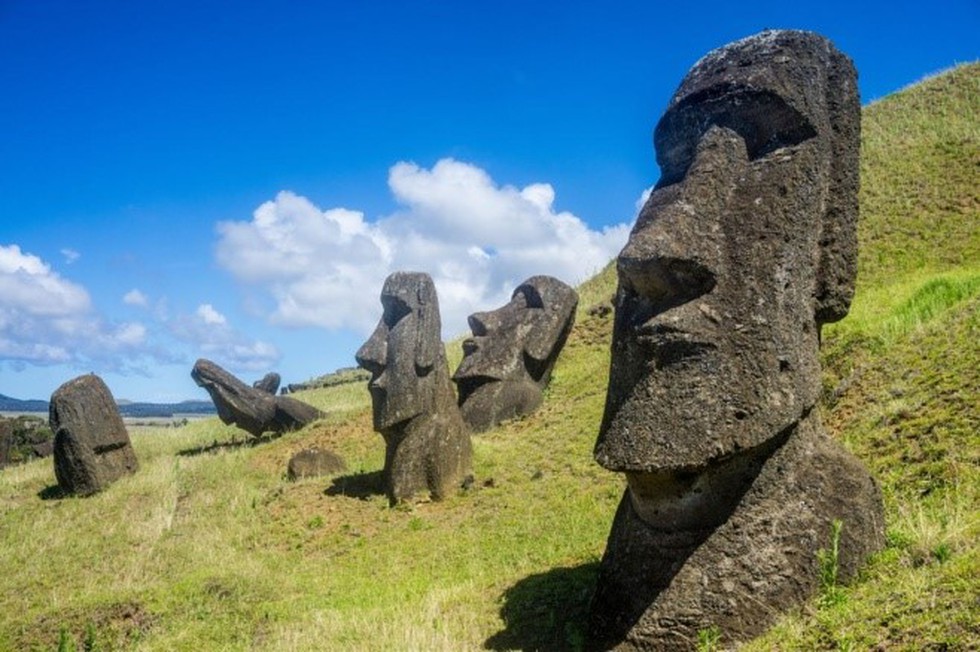
About Moai statues:
- They are massive megalithic stone-carved human-shaped statues found at Easter Island.
- They are famous for their carved heads and "Pukao," a hat-like covering made from a soft red stone.
- They were built inapproximately 1400 - 1650 A.D. by the natives of this island known as Rapa Nui.
- There are around 1000 Moai statues which are made up of volcanic tuff, the tallest of them being 33 feet.
- On average, they weigh between 3 to 5 tons, but the heaviest ones can weigh up to 80.
- The tools used for carving the moai statues are called toki, and are simple handheld chisels.
- What do moais represent?
- They were built to honor chieftains or other important people who had passed away.
- They were placed on rectangular stone platforms called ahu, which are tombs for the people that the statues represented.
- The moais were intentionally made with different characteristics since they were intended to keep the appearance of the person they represented.
Easter Island:
- Easter Island, also called Rapa Nui, is a remote Chilean territory located in the Pacific Ocean, roughly 2,200 miles from mainland Chile.
- It is one of the most remote inhabited places in the world.
- Much of the island, which is home to some 8,000 residents, is protected as a national park and a UNESCO World Heritage site.
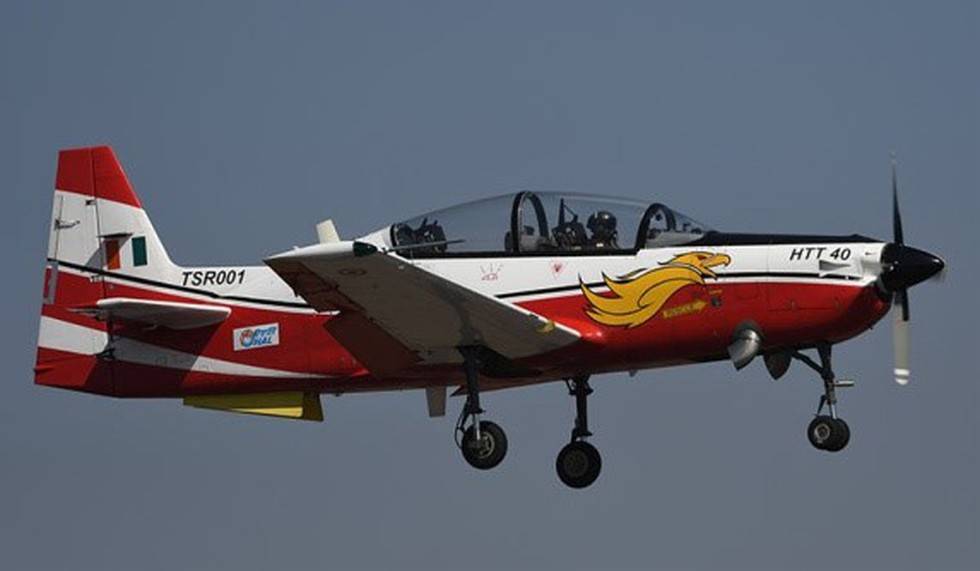
About HTT-40 trainer aircraft:
- The Hindustan Turbo Trainer-40 (HTT-40) is a basic trainer aircraft (BTA).
- It is designed and developed by Hindustan Aeronautics Limited (HAL).
- Features:
- It is a turboprop aircraft designed to have good low-speed handling for better training effectiveness.
- It has a maximum take-off weight of 2.8 tonnes.
- It can achieve a top speed of 450 Km/hr and a maximum range of 1,000km.
- The fully aerobatic tandem seat HTT-40 has an air-conditioned cockpit, modern avionics with multifunction displays, hot refueling, and zero-zero (zero speed and zero altitude) ejection seats.
- The aircraft will meet the shortage of BTAs for the training of newly inducted pilots of the Indian Air Force (IAF).
- It will be used for basic flight training, aerobatics, instrument flying, and close formation flights, in addition to undertaking secondary missions such as navigation and night flying flights.
What is a turboprop aircraft?
- A turboprop aircraft uses a turbo-prop engine rather than a piston-powered engine or a jet engine.
- They have one or more gas-turbine engines connected to a gearbox that turns the propeller(s) to move the aircraft on the ground and through the air.
- Turboprop aircraft have lower operating costs than jets because they burn less fuel, but they are also slower than jets.
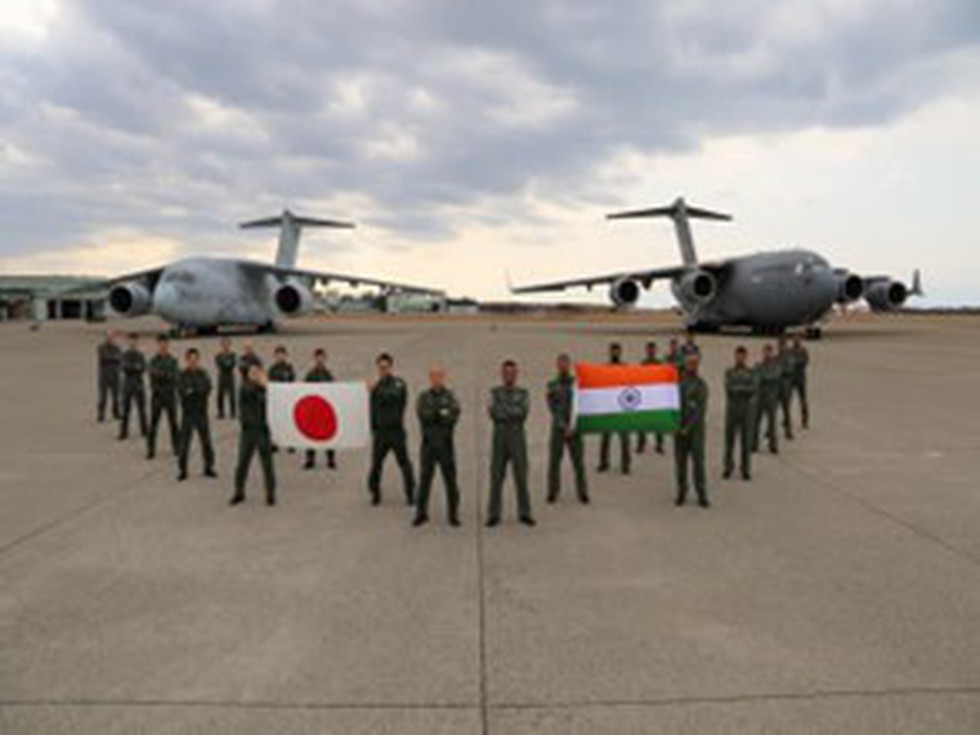
About Exercise Shinyuu Maitri :
- It is a bilateral military exercise between Indian Air Force (IAF) and Japan Air Self Defence Force (JASDF).
- The exercise is being organized on the sidelines of the Indo-Japan Joint Army Exercise, Dharma Guardian.
- The IAF contingent is participating in the exercise with one C-17 Globemaster III
- The first phase of the exercise consists of discussions on transport operations and tactical manoeuvering, followed by the second phase of flying drills by IAF’s C-17 and JASDF C-2 transport aircraft.
- The exercise will enhance mutual understanding and interoperability between the two air forces.

About the VAIBHAV Fellowship scheme:
- The fellowship offers Non-Resident Indian (NRI) researchers an opportunity to work for a minimum of one month to a maximum of two months a year with a research institution or an academic institution in India.
- Duration: Three years with the government offering the researchers an amount of up to Rs 37 lakh for the entire period.
- Aim: Improving the research ecosystem of India’s Higher Educational Institutions by facilitating academic and research collaborations between Indian Institutions and the best institutions in the world.
- This is done through the mobility of faculty/researchers from overseas institutions to India.
- Eligibility: Researchers from institutions featuring in the top 500 QS World University Rankings will be eligible for the fellowship.
- The applicant should be a Non-Resident Indian (NRI), Person of Indian Origin (PIO) or Overseas Citizen of India (OCI) and she or he must have obtained Ph.D/M.D/M.S degree from a recognized University.
- Significance: The best of Diaspora minds will collaborate with domestic Minds to deliver world-class projects and products.

About SWAYATT Initiative:
- It is an initiative to promote Start-ups, Women and Youth Advantage Through eTransactions on Government eMarketplace (GeM).
- Aim: To promote the inclusion of various categories of sellers and service providers on the portal by taking proactive steps to facilitate their training and registration, develop women's entrepreneurship, and encourage the participation of the MSME sector and startups in public procurement.
What is Government e-Marketplace (GeM)
- GeM is an Online Market platform that was set up in 2016 to facilitate the procurement of goods and services by government ministries, departments, public sector undertakings (PSU) etc.
- It has been envisaged as the National Procurement Portal of India.
- This portal was developed by the Directorate General of Supplies and Disposals (Ministry of Commerce and Industry) with technical support from the National e-governance Division (Ministry of Electronic and Information Technology).
- GeM is a completely paperless, cashless and system-driven e-marketplace that enables procurement of common-use goods and services with minimal human interface.

Why in news?
- The researchers have pointed out the following issues in the report
- Long-term use of this particular artificial sweetener is associated with an increased risk of heart attack and stroke.
- Erythritol made platelets easier to activate and form a clot.
- After ingestion, erythritol is poorly metabolised by the body. Instead, it goes into the bloodstream and leaves the body mainly through urine.
- The human body creates low amounts of erythritol naturally, so any additional consumption can accumulate.
What is Erythritol?
- Erythritol is a popular artificial sweetener that is widely available throughout the world.
- It is an organic compound - a naturally occurring, four-carbon sugar alcohol (or polyol).
- It is used as a food additive and sugar substitute.
- Erythritol is 60–70% as sweet as sucrose (table sugar).
- However, it is almost completely noncaloric and does not affect blood sugar or cause tooth decay.
- Synthesis: It is synthesized from corn using enzymes and fermentation.

About Foreign Contribution Regulation Act:
- This act was enacted during the Emergency in 1976 amid apprehensions that foreign powers were interfering in India’s affairs by pumping money into the country through independent organisations.
- The FCRA requires every person or NGO seeking to receive foreign donations to be
- Registered under the Act
- To open a bank account for the receipt of foreign funds in the State Bank of India, Delhi.
- To utilise those funds only for the purpose for which they have been received and as stipulated in the Act.
Eligibility criteria for the registration
- These registrations are granted to individuals or associations that have definite cultural, economic, educational, religious, and social programmes.
- The applicant should not be fictitious or benami; and should not have been prosecuted or convicted for indulging in activities aimed at conversion through inducement or force, either directly or indirectly, from one religious faith to another.
- Once granted, FCRA registration is valid for five years. NGOs are expected to apply for renewal within six months of the date of expiry of registration.
- Registration can be cancelled if an inquiry finds a false statement in the application
- Once the registration of an NGO is cancelled, it is not eligible for re-registration for three years.
- The ministry also has the power to suspend an NGO’s registration for 180 days pending inquiry and can freeze its funds.
- All orders of the government can be challenged in the High Court.
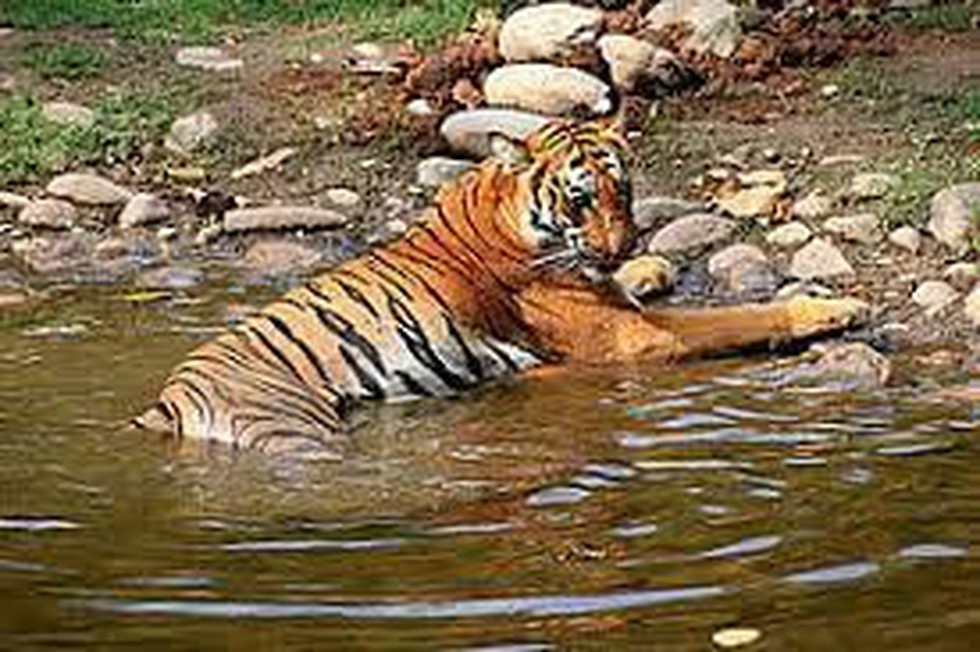
Why in news?
- To ensure systematic and time-bound implementation of the Greater Panna Landscape Management plan, the Greater Panna Landscape Council (GPLC) has been constituted under the chairmanship of the Chief Secretary, Govt. of Madhya Pradesh with members from all the stakeholders.
Key facts about the Panna Tiger Reserve
- Panna Tiger Reserve is a critical tiger habitat located in Vindhya Hill in northern Madhya Pradesh.
- The dominating vegetation type is dry deciduous forest interspread with grassland
- In the north, it is surrounded by teak forest & in the east, it is surrounded by Teak-Kardhai mixed forest.
- The North East-South West, running Vindhya Hill ranges link the eastern and western populations of wild animals.
- Fauna: Leopard, Wild dog, wolf, Hyaena, Sloth bear etc.
What is Ken-Betwa Link Project?
- Under this, the transfer of excess water from the River Ken to the Betwa basin through the use of a concrete canal is proposed.
- It is the first project under the National Perspective Plan for the interlinking of rivers.
- It aims to provide irrigation to the Bundelkhand region, which is one of the worst drought-affected areas in India.
- A Tripartite Memorandum of Understanding was signed between the Centre and the governments of UP and MP for the project.
- Implementing Agency: A Special Purpose Vehicle (SPV) called Ken-Betwa Link Project Authority (KBLPA) will be set up to implement the project.





























































































































































.png)
.png)
.png)
.png)
.png)


.png)
.png)
.png)





.png)
.png)






.png)
.png)
.png)
.png)
.png)
.png)
.png)
.png)
.png)

.png)







.png)
.png)


.png)
.png)
.png)


.png)

.png)
.png)





.jpg)

.png)
.png)


.png)

.png)
.png)
.png)

.jpg)

.jpg)


.png)

.png)
.png)
.png)
.png)
.png)
.png)
.png)
.png)
.png)
.png)




.png)

.png)





.png)
.png)
.png)
.png)
.png)
.png)
.png)
.png)
.png)
.png)
.jpg)
.jpg)

.png)
.png)
.png)
.png)
.png)
.png)
.png)
.png)
.png)
.png)
.png)
.png)
.png)
.png)
.png)
.png)
.png)
.png)
.png)
.png)
.png)
.png)



.png)
.png)

.jpg)
.jpg)


.jpg)
.jpg)
.jpg)
.jpg)
.jpg)

.jpg)








.jpg)
.jpg)
.jpg)
.jpg)
.jpg)

















.jpg)
.jpg)




.jpg)


















.jpg)
.jpg)






























































































.jpg)
.jpg)


























.jpg)

.jpg)










.jpg)








.jpg)




.jpg)










.jpg)


















.jpg)












































.jpg)














.jpg)
.jpg)
.jpg)





.jpg)

.jpg)
.jpg)





































































.jpg)


































.jpg)
.jpg)
















































.jpg)












.jpg)


.jpg)




.jpg)
.jpg)
.jpg)

.jpg)
.jpg)
.jpg)
.jpg)

.jpg)
.jpg)
.jpg)

.jpg)
.jpg)
.jpg)
.jpg)
.jpg)
.jpg)
.jpg)
.jpg)

.jpg)


.jpg)
.jpg)
.jpg)
.jpg)
.jpg)
.jpg)
.jpg)
.jpg)
.jpg)
.jpg)











.jpg)
.jpg)





.jpg)
.jpg)
.jpg)
























.jpg)
























.jpg)









.jpg)
.jpg)







.jpg)
.jpg)









































.jpg)
.jpg)
.jpg)
.jpg)
.jpg)

.jpg)
.jpg)
.jpg)
.jpg)
.jpg)


.jpg)
.jpg)
.jpg)
.jpg)
.jpg)

.jpg)
.jpg)
.jpg)
.jpg)
.jpg)
.jpg)
.jpg)
.jpg)
.jpg)
.jpg)
.png)

.png)
.png)

.png)
.png)
.png)
.png)


.jpg)
.jpg)

.jpg)
.jpg)
.jpg)

.png)
.png)
.png)
.png)
.png)
.png)
.png)

.png)
.png)
.png)
.png)
.png)
.png)
.png)
.png)
.png)
.png)





































































-min.png)



.png)




.png)








































